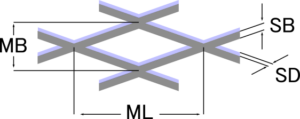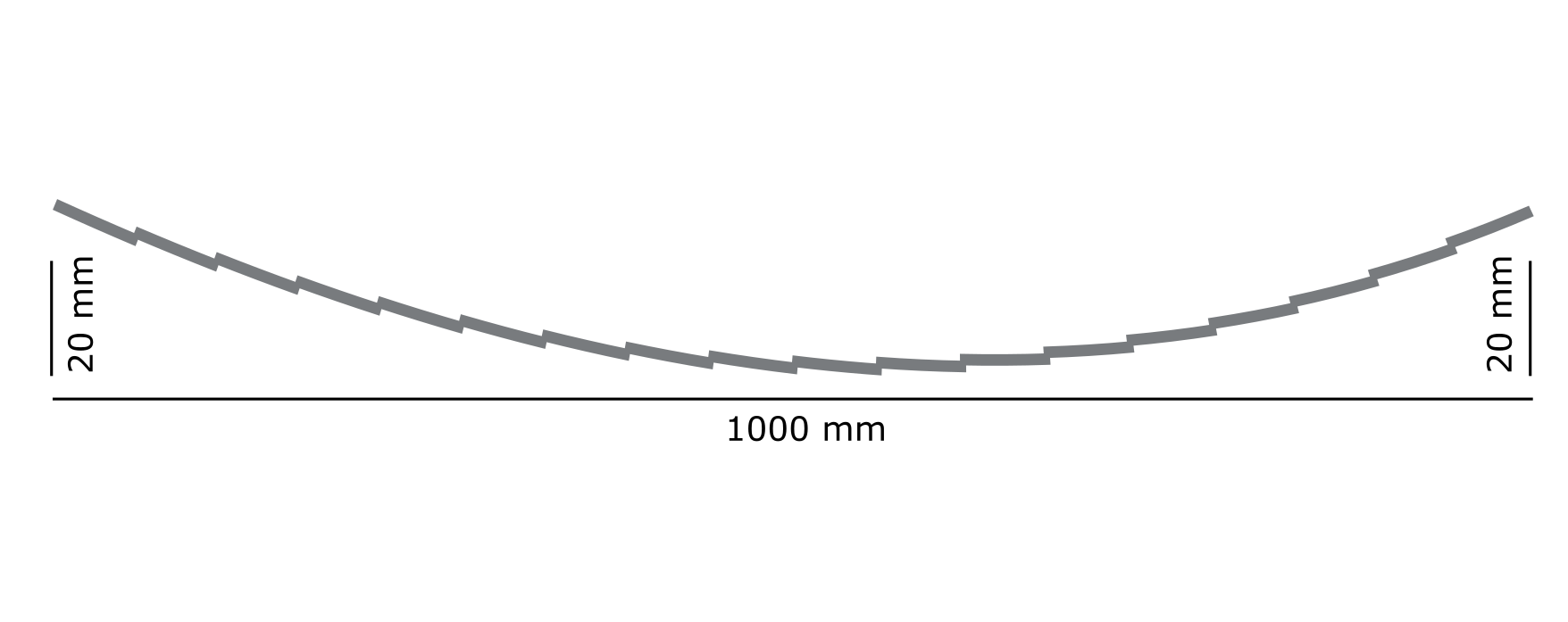Interesting facts about expanded metal
Expanded metal has four sides
Expanded metal has a twisting effect due to the production process, which gives it a structured property.
- A-side in stretching direction
- A-side against stretching direction
- B-side in stretching direction
- B-side against stretching direction
Cutting types of expanded metal
When cutting the expanded metal to size, the special conditions relating to the type of cut must be observed. A distinction is made between the following cutting types:
- BsLo – symmetrical width, open length
- BgLo – width closed, length open
- BsLg – symmetrical width, closed length
- BLg – width and length closed
- BLo – width and length open
The width and length can be cut according to the specified dimensions without taking the mesh symmetry into account.
How expanded metal is measured
Mesh length (ML)
Distance from center node to center node in the direction of the long diagonal
Mesh width (MB)
Distance from top edge of node to top edge of node in the direction of the short diagonal
Web width (SB)
Width of the material remaining between the openings
Web thickness (SD)
Thickness of the material used

Mash opening
Opening between four bars perpendicular to the expanded metal plane

Node
Crossing point between four abutting webs

Knot length
Distance between two long diagonals

Knot width
Approximately double the web width

Expanded metal thickness
Total thickness of the expanded metal

Planebenheit
Die Streckgitter gelten als plan, wenn sie mit der Krümmung nach oben auf eine ebene Fläche gelegt werden und der größte Abstand der Bleche von dieser Fläche 20 mm (auf 1000 mm Breite) nicht übersteigt. Bei hitzebeständigen Blechen darf der Abstand 40 mm betragen.
Säbelförmigkeit
Die Streckgitter gelten als gerade über die Längskante, wenn bei einer Blechdicke bis 3 mm der Krümmungsmittelpunkt nicht mehr als 1,5 % der Länge von der Geraden abweicht; bei einer Blechdicke über 3 mm nicht mehr als 2 % der Länge der Gerade abweicht.
